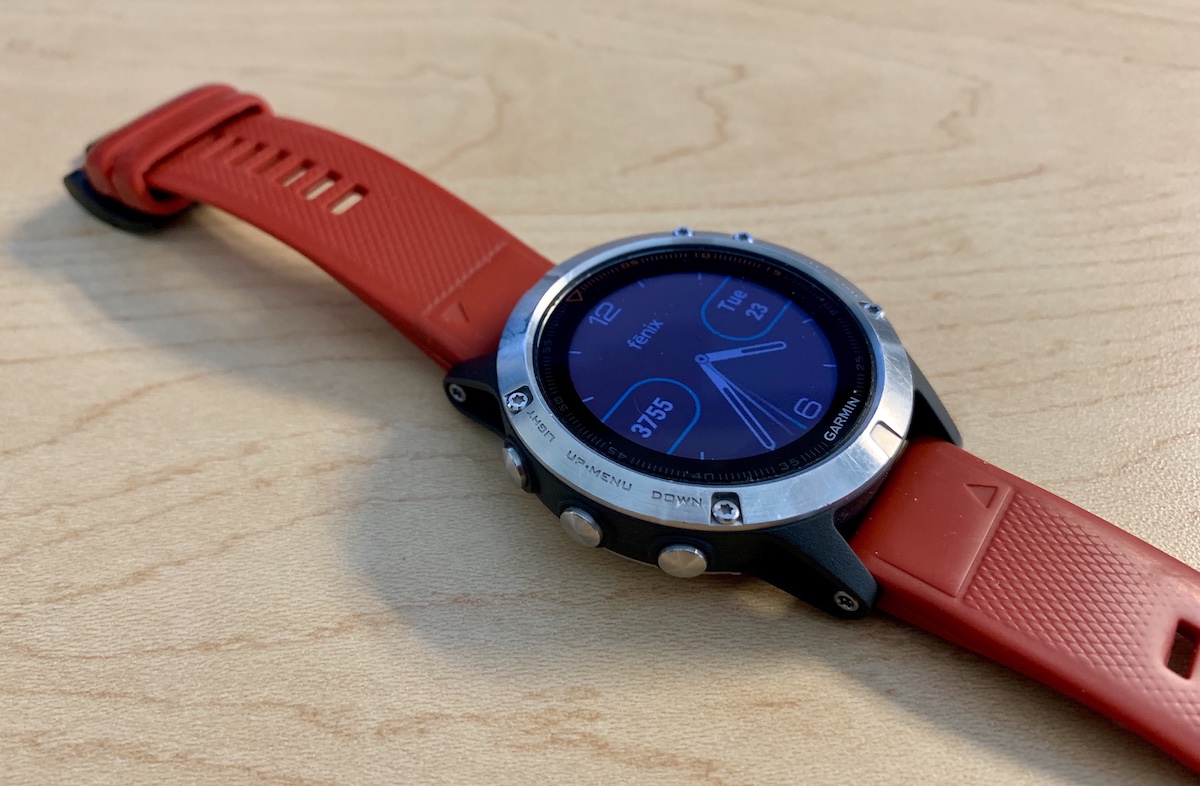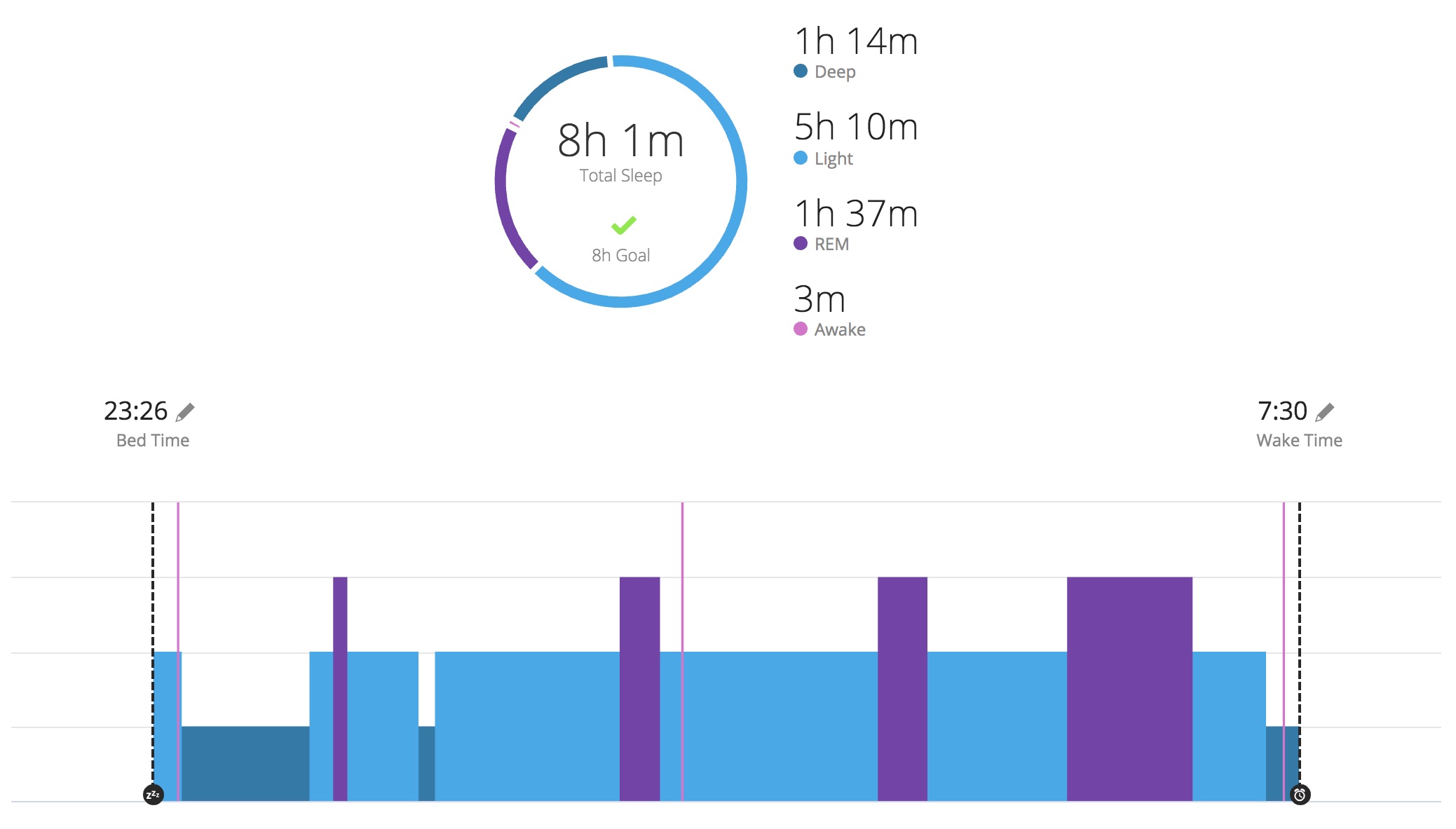Garmin fenix 5
Wearables have become such a big market these days that there’s a wide variety of options to pick from if you want to monitor activity metrics. From the basic Fitbit step counters to more ruggedized outdoor watches to full-blown smartwatches, there’s a device for everyone.
I’ve been a devoted user of Garmin’s activity tracking watches for years now, starting out with the Forerunner 220. A couple of years ago I upgraded to the fēnix 5 model, one of their highest-end watches.

I used the 220 model for about 3 years for run tracking. It was always reliable for me — water/sweat resistant, long enough battery life, and provided accurate GPS data. Because I also wanted to monitor heart rate during activities, I also used to use the chest strap HR monitor to feed that data to the watch. It worked reliably for a long while, but I think the contacts got corroded and the data started to get wonky after a time. I’d see huge surges in HR for no reason that would suddenly drop back down to normal.
I’ve now been using the fēnix for a couple of years and have loved it, one of the better devices I’ve ever owned. After a good experience with Garmin’s Forerunner series, I felt confident enough that I’d get benefit out of one of the higher end models. Let’s walk through some of its best features.
Multisport Activity Tracking
One of the things I didn’t like about the Forerunner was that it only supported recording run activities. The fēnix supports over a dozen activity types, indoor and outdoor, like cycling, climbing, swimming, and more. With the Forerunner it would still log GPX tracks that could be exported and treated however you want, but when synced to Garmin Connect or Strava, it would consider every activity a “run”. With fēnix when you select a different activity type, it gets picked up accurately in both sync services and treated differently for metrics reporting.
There are some differences between activity types in terms of instant feedback on the watch display. For example, between runs and rides, you can have different “lap” lengths to notify you of progress along an activity. So the advanced features like HR zones, pacing, and other things differ in how they’re fed back to you while you’re active.
I’m interested in incorporating swimming into my workout routine and to see how that would work with the watch.
HR Monitor
Having the HR monitor built into the device has some great advantages: mostly that it’s always on, and always available. I like that I get passive tracking of heart rate all the time to be able to see the resting heart rate during the day and during sleep (more on sleep tracking in a moment). I don’t have a good sense for the accuracy of the measurement with the on-wrist infrared sensor, but it seems generally consistent with what I used to see with the chest strap. To me it’s mostly important to have relative consistency between activities, and that I can see it in real time during activities. When I’m running I usually switch the watch display to view HR, which tracks amazingly closely with how I feel during a run. I can see a measurement of when I’m on the limit, so I typically use that readout to pace myself.
Battery Life
This is one of the best features about the fēnix, to me. Garmin reports 2 weeks of passive usage, 24 hours of active usage, which tracks pretty closely with my experience. What I tell people is that it lasts so long that I usually don’t remember exactly when I last charged it. This is the main reason that the Apple Watch has never interested me. I like the idea of richer apps on a wristwatch (especially with the phoneless-but-still-connected capability of the Series 3), but having to charge something every night is a nonstarter to me.
Sleep Tracking
Given that I wear the watch all the time, the sleep tracking is an easy side benefit. Ever since reading Why We Sleep recently, I’m more interested in prioritizing long enough sleep cycles (which with children simply means going to bed early). The watch reports not only sleep time, but also sleep stages somehow, through some combination of heart rate monitoring and movement tracking it buckets your sleep time into deep, light, and REM sleep stages. I don’t need hyper-accurate reporting, so this is a slick feature to get for free with an exercise tracker.
 A rare example of 8+ hours of sleep
A rare example of 8+ hours of sleep
I’ve heard about the Oura ring as well for more detailed sleep tracking, but it’s a bit pricey for something I don’t have a big problem with right now. If I want to get more sleep, the simple solution is to prioritize it (which I don’t do well).
Smartwatch Capability
Through Bluetooth pairing, the fēnix also supports integration with push notifications from the phone. This can be convenient sometimes, but I’ve honestly never used it that much. Probably the most utility for me is quick access to turn-by-turn directions while in the car or on my bike. Quick readout of SMS and instant messages is convenient, too.
Strava Integration
You can set up Garmin Connect to sync with a number of services, including Strava, which is the only one I use for activity tracking. The main feature it has tied to Strava that I like is that with Segments in Strava, any segments you add to your favorites transfer to the watch for live progress tracking. It’s a feature they call Live Segments, and it’s cool because it’ll give you live feedback on your performance against your previous efforts and the KOMs from your friends. I love the ability to challenge myself on my own personal records on common routes.
The syncing works pretty flawlessly both with Garmin Connect and Strava. Never had a problem making sure my data is always up to date.
Any Downsides?
It’s been a rock-solid device for me, overall, with no major drawbacks.
The custom charging connector is probably the only downside, and not too acute because of the long battery life and rarity of needing to charge. It’d be much smarter for Garmin to use USB-C or micro-USB, but I don’t know what would motivate a custom interface. Given that the connector plugs in perpendicular to the watch back, it’s possible that there’s not enough thickness to fit the receptacle for a USB-type connector. Regardless, the need for a special cable to charge is an annoyance. I have keep one at home and a spare at the office so I can charge anywhere.
Overall it’s a very solid device, and I’d consider buying other Garmin devices down the road.